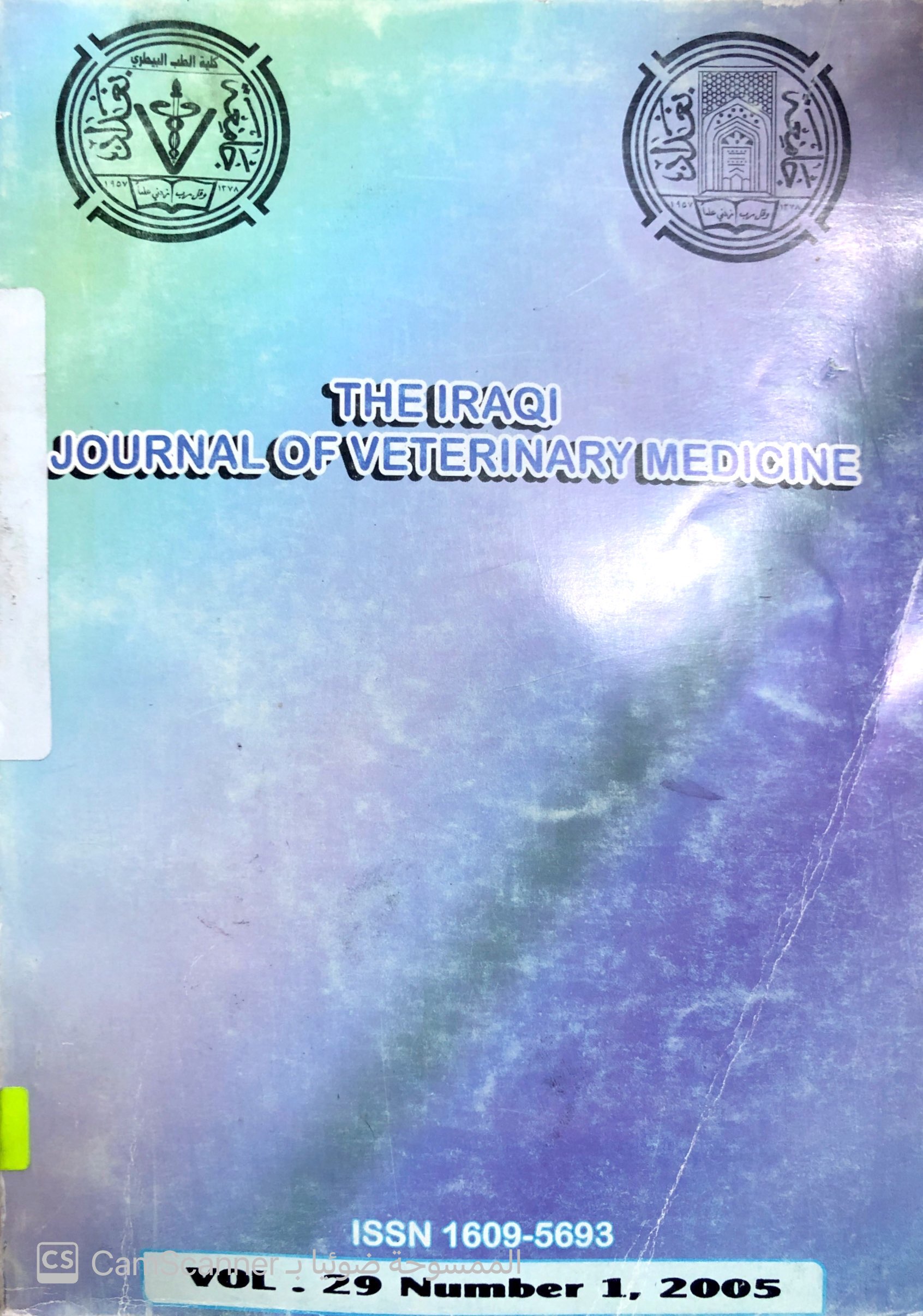Bacterial causes of upper & lower respiratory tract infection in Sheep Jamal Salman Ali , Hayder Badri Abboud
Main Article Content
Abstract
This study was designed to investigate the bacterial species that induce
upper and lower respiratory tract infection in sheep, and to find out any
relationship which may exist between them.
Therefore two groups of sheep were employed. The first group was
suffering from certain respiratory signs. While the second group was apparently
healthy. Each group included 50 sheep. Research samples were collected for a
period of six months from AL-Shulla Abattoir.
Microbiological investigation indicated the isolation of certain
microorganisms from all animals in both groups from nasal cavity, and from 34
lungs of the first group and 16 lungs of the second group. The number of isolates
from the nasal cavity, were 200 from different species ,43 isolates from the
bronchioles and 70 from the lungs tissue. On the other hand the number of
bacterial isolates from the nasal cavity, bronchioles and the lung tissue of the
first group were 113, 29 and 55 respectively.
The study revealed the isolation of potentially pathogenic bacteria from the
lower respiratory system of both groups, these bacteria were namely Pasteurella
haemolytica of serotype (A2), Niesseria spp. and Corynebacterium pyogenes,
the number of isolates were 6 for each, and 8 isolates of Staphylococcus aureus.
These bacteria were also isolated from the nasal cavity. The isolation of these
bacteria from the nasal strongly suggested their presence in the lungs and the
probable role in lesion formation.
Animal inoculation were performed to study the virulence of P.
haemolytica which caused certain hemorrhagic lesion in the lung , liver and
kidney, with areas of necrosis in the lungs of the experimentally inoculated
rabbit, and caused death in mice. While the inoculation of C. ovis caused the
death of rabbits within 72 hours, together with the presence of multiple
abscessation on the internal organs and abdomenal wall.
Sensitivity tests indicated a high sensitivity of most isolates to Gentamicin,
Erythromycin and Kanamycin.
Downloads
Article Details
Section




